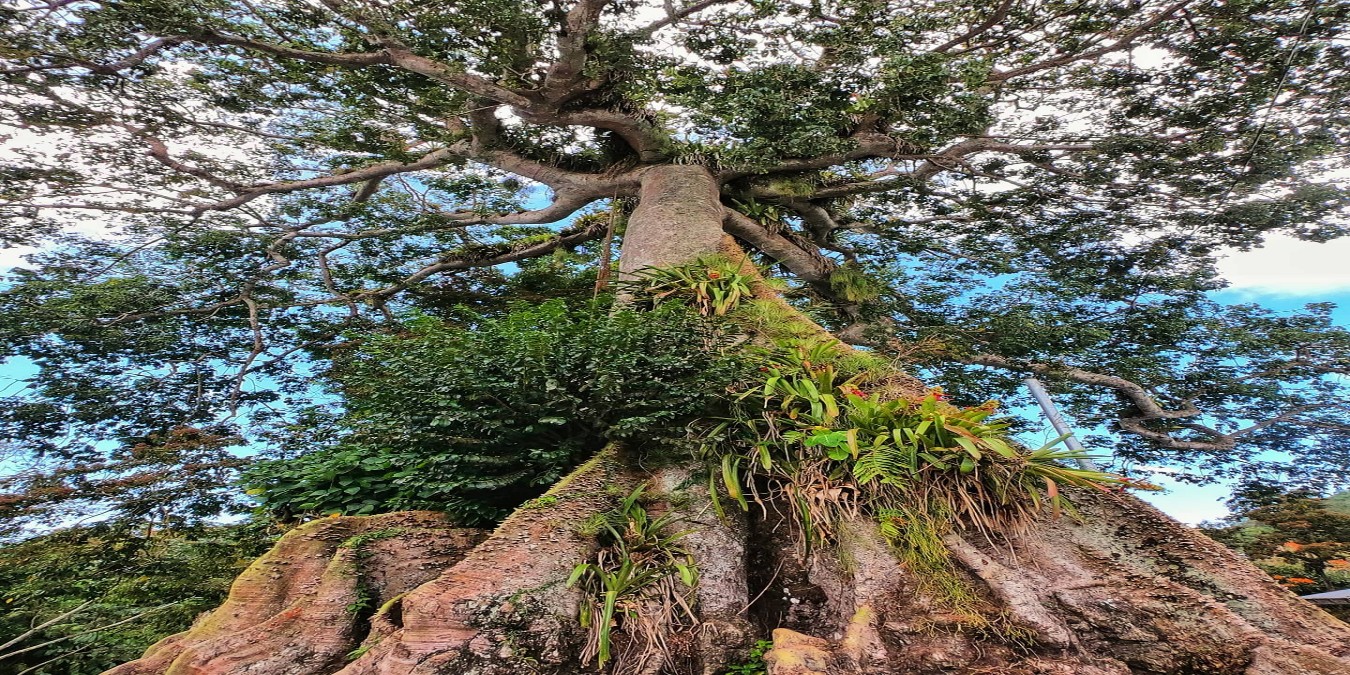The Silk Cotton Tree (Ceiba pentandra), one of Tobago’s most iconic natural landmarks, is renowned for its towering height, expansive canopy, and massive buttress roots that secure it to the ground. Often towering above the forest canopy, this majestic tree commands attention for both its grandeur and its deep cultural significance across the Caribbean.
In Tobago, the Silk Cotton Tree is more than a symbol of nature’s strength; it is a living monument of heritage and remembrance. For centuries, it has been woven into local folklore and spiritual beliefs, regarded as a sacred home for ancestral spirits, or jumbies. Its immense presence inspired both reverence and caution, as it was believed that disturbing such a tree could bring misfortune.
Perhaps the most famous of these trees once stood in the village of Golden Lane, forever linked to the legend of Gang-Gang Sarah, an African woman said to possess mystical powers. According to tradition, Sarah climbed the great Silk Cotton Tree in an attempt to fly back to Africa, but after eating salt, she lost her power to soar and fell to her death. Her story, passed down through generations, remains one of Tobago’s most enduring tales of love, loss, and longing for home.
Ecologically, the Silk Cotton Tree plays a vital role in Tobago’s forests. Its tall structure provides nesting sites for birds and shelter for countless other species. The tree’s pods release fine, silky fibres once used for stuffing and flotation, which is the origin of its name.
Although the historic Silk Cotton Tree of Golden Lane fell in 2020, its legacy continues to live on, not only in the stories told beneath its shade but also in the enduring respect Tobagonians hold for these majestic trees. Standing proudly across the island, each Silk Cotton Tree remains a powerful reminder of Tobago’s intertwined natural and cultural heritage.


Comments